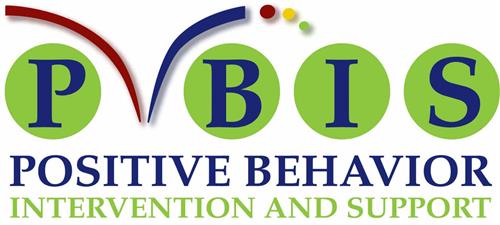- Monte Vista Elementary School
- Acknowledgement System
PBIS information
Page Navigation

School-wide Acknowledgement System
-
What exactly is PBIS?
Positive Behavior Interventions and Supports (PBIS) is a decision making framework that guides selection, integration, and implementation of the best evidence-based academic and behavioral practices for improving academic and behavior outcomes for all students.
Staff Managed Behavior
-
If the inappropriate behavior persists or intensifies, it is important to know when to step away before the inappropriate behavior escalates beyond what can be appropriately managed in the instructional environment.
-
It is important to know students well enough to anticipate those who are more likely to escalate when confronted by staff. (CKH)
-
If the behavior persists, the student may be referred to the office.
-
The assumption is that staff have done all they can to correct the problem, that the behavior is not responding to intervention, and the student is not being successful.
School-Wide Acknowledgement
School-wide acknowledgment systems are immediate, intermittent, and long-term reinforcements given by adults in the building to any students displaying expected school-wide behaviors defined by the school’s matrix. Students will be rewarded with mustang golds and prizes or activities for showing how to be Respectful, Responsible, Achieve to Succeed, be Considerate of others, and Encourage others daily. These are Monte Vista’s RACE rules or school wide expectations the staff will promote and reinforce.
Reinforcement
Examples: “Thank you for walking to the playground. You are being considerate!”
“Great job turning in your homework. That’s how you achieve to succeed.”
Non-Examples: Giving mustang gold without saying anything. Giving mustang golds and saying “Happy Birthday.” Only giving for “above and beyond” behavior.
Remember to always tell students why they are receiving a reward and make sure you reinforce what expectation they are showing.
State, Teach, Review & Reinforce Positively Stated Expectations
-
Establish behavioral expectations/rules, use classroom matrix.
-
Teach rules in context of routines.
-
Prompt or remind students of rule prior to entering natural context.
-
Monitor student behavior in natural context & provide specific feedback.
-
Evaluate the effect of instruction - review data, make decisions, & follow up.
Provide More Acknowledgements for Appropriate Than Inappropriate Behavior
-
Maintain at least 5 to 1 (5 positive comments to 1 correction)
-
Interact positively once every 5 minutes (give affirmations)
-
Follow correction for rule violation with positive reinforcer for rule following- correct a student who is doing the wrong thing then praise a student for doing the right thing.
Actively & Continuously Supervise
-
Move
-
Scan
-
Interact
-
Remind/pre-correct
-
Positively acknowledge
Respond to Inappropriate Behavior Quickly, Positively, & Directly
-
Respond efficiently
-
Attend to students who are displaying appropriate behavior
-
Follow school procedures for major problem behaviors objectively & anticipate next occurrence (Use consequences behavior chart and fill out ODR if necessary)
Establish Multiple Strategies for Acknowledging Appropriate Behavior
-
Social, tangible, activity-based, etc.
-
frequent vs. infrequent
-
predictably vs. unpredictably
-
immediate vs. delayed
Provide Specific Feedback for Errors and Corrects
-
Provide predictability and link to context
-
indicate correct behaviors (use classroom matrix and social contract)
-

